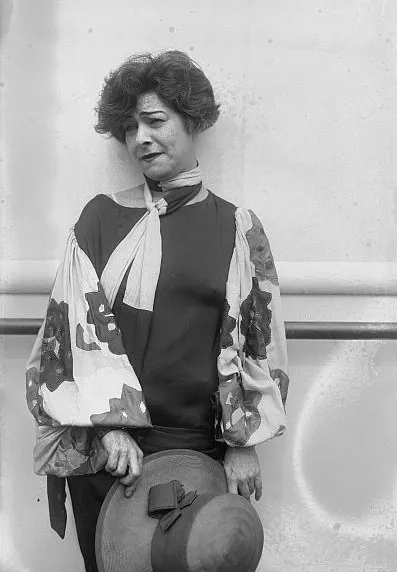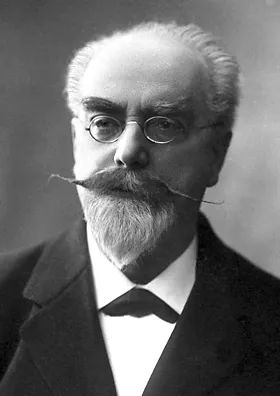
Name: Arnold Schoenberg
Birth Year: 1874
Death Year: 1951
Nationality: Austrian-American
Profession: Composer and Painter
1951 – Arnold Schoenberg, Austrian-American composer and painter (b. 1874)
Arnold Schoenberg, a name that resonates through the corridors of music history, was born in 1874 in Vienna. He emerged as a pivotal figure in the world of composition, breathing new life into the very fabric of musical expression during a time when traditional forms were being challenged and redefined. However, his journey was not merely one of musical innovation; it was a narrative steeped in personal struggle and cultural upheaval.
As a young man navigating the bustling streets of late 19th-century Vienna, Schoenberg found himself entranced by the burgeoning modernism that surrounded him. His early influences ranged from Mahler to Wagner, each contributing threads to his rich tapestry of sound. Yet it wasn't until he started composing that his true voice began to emerge one that would eventually break free from conventional tonality altogether. Ironically, while his peers clung to the past, Schoenberg's audacious approach would lead him down an uncharted path that few could fathom at the time.
Despite this budding talent, Schoenberg faced daunting challenges throughout his career. His move from Europe to America during World War II marked a significant turning point not just geographically but artistically as well. Arriving on U.S. soil amidst growing tensions back home and personal losses felt like stepping into a new realm where he could reestablish himself as both composer and painter.
The 12-tone technique he developed became synonymous with his name a revolutionary method that fundamentally altered how music was composed and perceived. Imagine this: instead of sticking to traditional scales or keys, Schoenberg saw potential in dissonance and chaos! Who knows what drove him to embrace such complexity? Perhaps it stemmed from his own tumultuous life experiences or an insatiable curiosity for exploring uncharted territories within sound.
His compositions like "Pierrot Lunaire" showcased this innovative spirit brilliantly; blending spoken word with lush orchestration created an unsettling atmosphere reflective of modern existentialism a true embodiment of angst swirling around Europe at the time! This work not only captivated audiences but also polarized them; some hailed him as genius while others dismissed him outright.
Schoenberg's artistry wasn't limited solely to music; he explored painting too! At times these two passions intertwined his visual art echoing themes found within his scores. However, much like many artists who venture beyond their primary medium's boundaries, critics often struggled to categorize him definitively…
The death knell for Arnold Schoenberg came on July 13th in 1951 after years spent navigating illness yet even then there remained an undeniable aura surrounding this man whose legacy persisted long after he departed from our world...
Early Life and Musical Education
Growing up in a Jewish family, Schoenberg showed an early interest in music. He began studying music theory and composition in his teens, displaying remarkable talent and dedication. After moving from Vienna to Berlin, he gained recognition as a composer and conductor, becoming an influential figure in the Avant-garde music scene of the early 20th century.
Innovative Compositions
Schoenberg's music is often associated with the movement away from the traditional harmonic system of Western music. His innovative style led to the development of atonality, a system where music is composed without a tonal center, challenging the established boundaries of musical coherence.
Among his notable works are 'Pierrot Lunaire' (1912), a melodrama that employs Sprechstimme, a vocal technique combining spoken and sung elements, and the orchestral work, 'Five Pieces for Orchestra' (1909), which depicted extreme emotional expressions characteristic of his style during this period.
The Twelve-Tone Technique
In the 1920s, Schoenberg developed the twelve-tone technique, a groundbreaking compositional method that used a series of all twelve notes of the chromatic scale in a particular order, called a tone row. This method provided a structure that replaced traditional tonal organization, laying the foundation for a new era in classical music. His seminal work, 'Suite for Piano, Op. 25', showcases this innovative approach, highlighting its complexity and intricacy.
American Years
In 1933, fleeing the rise of the Nazi regime, Schoenberg emigrated to the United States. Settling in Boston before moving to Los Angeles, he continued to compose and educate, influencing a new generation of composers. During this time, he created several significant works, including his 'Violin Concerto' (1934) and 'A Survivor from Warsaw' (1947), a powerful composition that reflects his experience as a Jewish individual during the Holocaust.
A Lasting Legacy
Arguably one cannot discuss contemporary classical music without acknowledging Schoenberg's profound impact on future generations from composers experimenting with serialism to avant-garde musicians incorporating elements inspired by his vision!
The Modern Connection
Fast forward today: nearly three-quarters of a century later since Schoenberg’s passing… His influence has infiltrated genres far beyond classical reverberating through jazz improvisation techniques alongside contemporary pop arrangements! In street interviews with young musicians on platforms like TikTok discussing their creative processes you might hear echoes reminiscent of those radical ideas first put forth by Arnold himself!
Perhaps there's something poetic about how someone who once struggled against societal norms now finds resonance among youth clamoring for authenticity in an era defined by digital noise... With every sampled note or chromatic scale explored further we pay homage not just directly but indirectly to someone willing enough risk everything just so we may hear differently today!
The reverberations left behind by Arnold Schoenberg continue shaking up perceptions even now a testament signifying not only artistry but resilience amid adversity forged throughout lifetimes dedicated towards redefining possibility itself... And so here lies testament honoring both achievements triumphantly embraced whilst also recognizing imperfections which allowed them flourish all intertwining seamlessly within rich narratives shaped across centuries!
The Role Of Personal Experience
An exploration into Shoenburg’s psyche reveals another layer entirely the notion that perhaps life's adversities sculpted melodic lines flowing through orchestras decades later! From experiencing anti-Semitism firsthand due frequent relocations stemming persecution pushing ever onward chasing dreams despite obstacles standing tall as if embodying very essence resilience that ultimately informs artistic expression transcending mere notes strung together whimsically into symphonies meant evoke visceral responses audiences never knew existed before they heard them played aloud...
No wonder then what makes those pieces timeless they’re more than mere collections sounds organized meticulously they resonate deeply touching chords hidden within each listener uncovering facets humanity woven intricately harmoniously through dissonance allowing growth discovery unknown depths explored collectively together!




